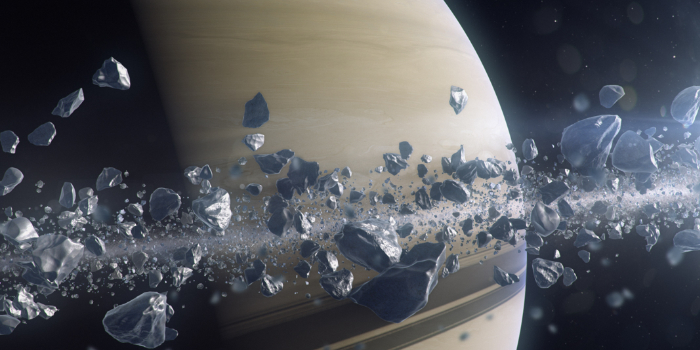| 2025: The Case of the Missing Rings (2024-12-24) ⬅︎ |
 |
During the weeks surrounding March 23, 2025, the rings of Saturn will seem to vanish. It will happen again around November 20. Can this be for real? The answer is yes. The rings won't really be disappearing, but from our perspective, they will be missing.
Saturn, like Earth, orbits the Sun. Earth takes a year to complete its journey, while Saturn takes a whopping 29.6 years. And, like Earth, Saturn spins on its axis tilted over a bit. Earth’s tilt is 23 degrees, while Saturn’s is a close 27 degrees.
Now, here’s the fun part: during part of Saturn’s 30-year orbit, it’s tilted towards us, and we get to see the upper side of its magnificent rings. But then, it tilts away, and we only see the lower side. But here’s the twist - when Saturn makes this transition from tilting towards us to tilting away, for a short while, the rings become edge-on to us. And that’s when they’ll seem to vanish!
Have you ever seen Saturn through a telescope? It’s an awe-inspiring sight! The rings, stretching an incredible 175,000 miles in diameter, are easily visible from Earth, even through a small telescope. But here’s a mind-blowing fact: the rings are only about 60 feet thick! That’s super thin, too thin to be visible from Earth.
So, mark your calendars! In 2025, Saturn will be making this transition, and for a while in March and November, the rings will be edge-on to us, and we won’t be able to see them for a while.
Here’s a simulation that shows how Saturn and its rings appear from Earth from 2020 to 2026. Keep in mind that Earth’s position and tilt also affect how Saturn looks to us, so Saturn will appear to wobble left and right and grow bigger and smaller each year. But focus on the rings and how much and what parts are visible.
2025 will be a great year for viewing Saturn and watching its rings slowly vanish and then reappear. You'll need a telescope of course.
⚠️ Important note: Saturn's superior conjunction will be on March 12 (aligned with the Sun). So from about mid-February to mid-May in the Starry Hill region, Saturn will be too close to the Sun in our sky for easy viewing. Check out the daily Saturn viewing info in the Star Guide section for 2025.
Fingers crossed for lots of clear skies for this rare and not-to-be-missed event! |
| |



